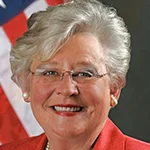 |
| Shannon Tucker |
According to a recent survey by PowerInbox, 73 percent of adults worry about false information or fake news being used as a weapon, while only 55 percent of people trust online-only media sites (the ones we PR people frequently pitch that do wonders for our clients’ brands).
What the general public doesn’t know, however, is PR’s role in the biased news cycle and its implications. After all, reporters get their story ideas and sources from somewhere, right?
PR professionals need to do better. Our biases against Fox News or the New York Times have implications—if we don’t provide these outlets with access to the news, then we have only ourselves to blame for the continued misrepresentation or lack of information provided by politically charged news sites.
The question is, how do we do better? After my own personal experience working with a client who requested I not ever pitch Fox News with their stories, I’ve gained some wisdom I’d like to impart:
The “P” in “PR” stands for “Public,” not “Politics.”
As we pitch stories about addiction treatment or sexual harassment, are Fox News reporters not covering them because of their own stance on the topic? Or because a PR person didn’t pitch them due to personal bias? Ask yourself that question every time you refrain from pitching an outlet with strong political views. If Fox News was pitched more liberal stories, readers would get a better view of other perspectives. We must give journalists equal opportunity to report on the news. They are a part of the “public” we refer to in our own job titles as public relations professionals.
Learn fact vs. opinion.
Let’s venture back in time to your freshman year of college in your “Introduction to Journalism” class. Hopefully, you learned it’s a reporter’s job is to report the facts in a non-biased way. A reputable news source will go in-depth on both sides of issues. When it comes to who you pitch about a news story, it should not matter if their editorial board is made up of donkeys or elephants. It’s our job as PR professionals to inform clients when they forget the difference.
Educate your clients.
Not granting specific media outlets embargoed news simply because of how you view them means you are part of the problem and are influencing the cycle of biased news. If a particularly right- or left-leaning news outlet wants to take a stance on your client’s news, that’s a different story, but out of ethical obligation, we must try.
Some PR professionals will disagree with this, claiming it is our ethical duty to please our clients by placing them in their desired news outlets, or keeping them from being mentioned in outlets they don’t like. I don’t disagree – but, that’s what thought leadership pitches and content can achieve.
However, purposefully excluding a news outlet from getting access to hard news (not fluffy stories that impact your worldly views as a reader) is like putting a blindfold on half of the population. If a publication reports the news in a biased way, that’s a different issue—but they deserve the opportunity to cover the story.
Remember the line isn’t yours to draw.
But what about when you JUST KNOW a media outlet is horribly biased and it even shows up on this 2018 media bias chart? As PR people, where do we draw the line?
The line isn’t ours to draw.
We all know there are some outlets that are so unreliable they aren’t going to be worth your time to send a proactive pitch. Since not everyone agrees on what those unreliable outlets are, give everyone equal access to your client’s news, data, and spokespeople. Give everyone equal opportunity to learn what’s true.
***
Shannon Tucker is senior director of media relations at www.sspr.com.


 Southern governors claim they know what's best for their working class, and it's not pay raises... A Ukrainian human rights group played a key role in convincing House Speaker Mike Johnson to hold a vote to send arms to Ukraine, Israel and Taiwan... Trump Media & Technology Group blames short-selling and not lousy outlook for its stock slump.
Southern governors claim they know what's best for their working class, and it's not pay raises... A Ukrainian human rights group played a key role in convincing House Speaker Mike Johnson to hold a vote to send arms to Ukraine, Israel and Taiwan... Trump Media & Technology Group blames short-selling and not lousy outlook for its stock slump. The techniques deployed by OJ Simpson's defense team in the 'trial of the century' served as a harbinger for those used by Donald Trump... People worry about the politicization of medical science just as much as they fret about another pandemic, according to Edelman Trust Barometer... Book bans aren't restricted to red states as deep blue Illinois, Connecticut and Maryland challenged at least 100 titles in 2023.
The techniques deployed by OJ Simpson's defense team in the 'trial of the century' served as a harbinger for those used by Donald Trump... People worry about the politicization of medical science just as much as they fret about another pandemic, according to Edelman Trust Barometer... Book bans aren't restricted to red states as deep blue Illinois, Connecticut and Maryland challenged at least 100 titles in 2023. The NBA, which promotes legalized gambling 24/7, seems more than hypocritical for banning player for placing bets... Diocese of Brooklyn promises to issue press release the next time one of its priests is charged with sexual abuse... Truth Social aspires to be one of Donald Trump's iconic American brands, just like Trump University or Trump Steaks or Trump Ice Cubes.
The NBA, which promotes legalized gambling 24/7, seems more than hypocritical for banning player for placing bets... Diocese of Brooklyn promises to issue press release the next time one of its priests is charged with sexual abuse... Truth Social aspires to be one of Donald Trump's iconic American brands, just like Trump University or Trump Steaks or Trump Ice Cubes. Publicis Groupe CEO Arthur Sadoun puts competition on notice... Macy's throws in the towel as it appoints two directors nominated by its unwanted suitor... The Profile in Wimpery Award goes to the Ford Presidential Foundation for stiffing American hero and former Wyoming Congresswoman Liz Cheney.
Publicis Groupe CEO Arthur Sadoun puts competition on notice... Macy's throws in the towel as it appoints two directors nominated by its unwanted suitor... The Profile in Wimpery Award goes to the Ford Presidential Foundation for stiffing American hero and former Wyoming Congresswoman Liz Cheney. JPMorgan Chase chief Jamie Dimon's "letter to shareholders" is a must-read for PR people and others interested in fixing America and living up to its potential... Get ready for the PPE shortage when the next pandemic hits... Nixing Netanyahu. Gaza carnage turns US opinion against Israel's prime minister.
JPMorgan Chase chief Jamie Dimon's "letter to shareholders" is a must-read for PR people and others interested in fixing America and living up to its potential... Get ready for the PPE shortage when the next pandemic hits... Nixing Netanyahu. Gaza carnage turns US opinion against Israel's prime minister.


 Have a comment? Send it to
Have a comment? Send it to 
No comments have been submitted for this story yet.